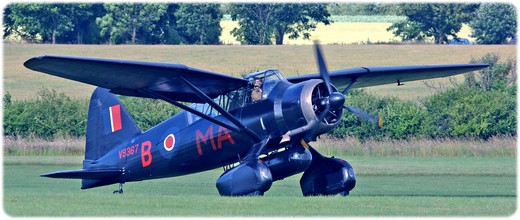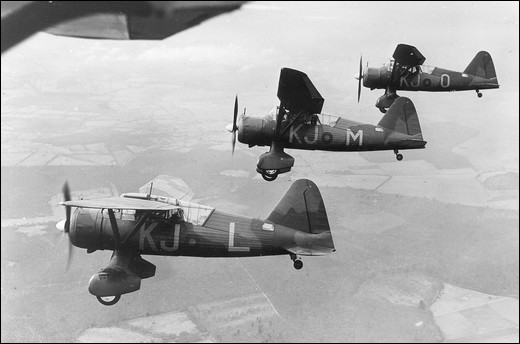 |
Westland Lysander
The Westland Lysander was a British liaison aircraft during the time of the second world war. It could land and take off from short, unprepared strips and was therefore much used for secret operations behind enemy lines. Its missions were often to deliver or collect agents in occupied France, in cooperation with local resistance groups.
[ Top of page ]
History
In 1934 the British Air Ministry decided that it was time to replace the Hawker Hector with a new liaison aircraft, and specification A.39/34 was issued to the chosen manufacturers. First there were three: Hawker, Avro and Bristol, but following internal discussions at the ministry it was decided to also invite Westland.
Westland designers Arthur Davenport and Teddy Petter presented their proposal after spending a lot of time interviewing RAF pilots and finding out what they wanted and expected from the new aircraft. Good field of view and low-speed handling was on top of the list. The result, designated P.8 at Westland, was an unconventional and rather antique looking aircraft. Its maiden flight took place on June 15, 1936.
 |
|
| Westland Lysanders over the English countryside. The picture is taken sometime in the late 1930's. |
Despite its appearance, the Lysander was aerodynamically advanced. The stall speed was as low as 104 km/h, thanks to several innovative features in the construction of the wings. The power plant was an air cooled 900 hp Bristol Mercury radial engine. After evaluating the Westland Lysander and its only remaining competitor, the Bristol Type 148, the Air Ministry decided in favour of Westland. The contract for manufacturing was signed in September 1936.
The Lysander entered service in June 1938 and was initially used for artillery spotting and for delivering messages. When World War Two broke out many of them were in France acting as spotters and light bombers. But being an easy target for the Luftwaffe, almost half of them were lost when the British Expeditionary Force retired and France fell. During 1940-41 many of the remaining Lysanders primary occupation was to take part in sea rescuing operations in the English Channel, dropping dinghies to downed pilots waiting to be picked up.
In August 1941, a new squadron, 138 Special Duties, was formed to undertake operations to maintain contact with the French resistance. Other aircraft in the squadron were used for supply drops but as the Lysanders could fly over and land, they were used to retrieve aircrew that had been shot down and not yet captured by the Germans (or had escaped captivity) and to insert or remove agents.
 |
|
| Lysander Mk II on a questionable landing strip. The punctured tire is attended to. |
Such high-risk missions were flown on moonless nights by a single pilot with nothing more than a map and compass for navigation. On arriving at the rendezvous point, which had been chosen and hastily prepared by a resistance group and, if time permitted it, had been photographed by a recognisance aircraft, the pilot would take down his Lysander on a short, improvised landing strip, only guided by a few torches arranged in a predefined L-shape. The passenger would quickly get onboard with one or two bags and then the party would take off and leave the scene as fast as possible. In an emergency two people could be squeezed in, but because of engine noise and cabin design it was virtually impossible to communicate with the pilot. 101 agents were inserted and 128 removed in this way during World War Two.
Westland Lysander Mk IIISD (Special Duties) that were used were painted matt black and modified with a "spy ladder" on the port side for quick access to the back seat, and a big extra belly tank, which together with extra oil tanks increased the aircraft's weight by 58 percent, but also increased the time it could stay airborne by 8-10 hours.
Some foreign air forces bought the Lysander, including Finland, USA and Egypt. In England the aircraft was retired in 1946 and the last ones to serve anywhere were the ones used by Egypt in the war against Israel in 1948.
1,786 Westland Lysanders were built, including 225 made under license in Canada.
[ Top of page ]
Video
| Shuttleworth Collection's Westland Lysander, 2010. | |
[ Top of page ]